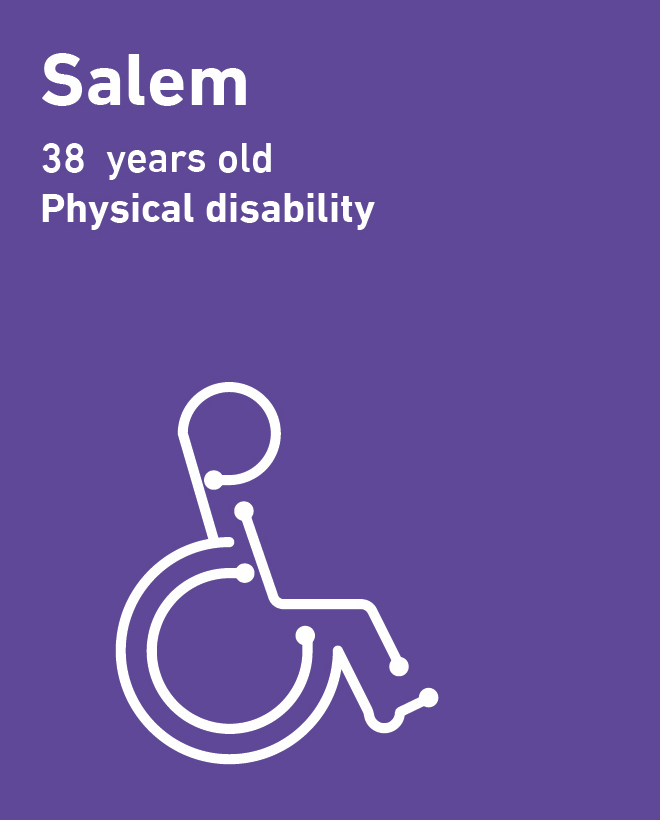Summary
Acquiring information about relevant indoor locations within a facility can be challenging for PWDs with conditions like visual impairment and blindness. This can also be the case for wheelchair users who would require accessible paths to reach relevant areas within a location. The provision of indoor navigation information in facilities like libraries can help in enhancing the user journey of PWDs to efficiently access relevant areas and services. The adoption of such technology will ensure an accessible user journey experience for PWDs with various types of disabilities.
Completed
User Journey
 Salem is 38 years old and is a wheelchair user. Salem is keen book reader and enjoys the experience of spending time to read various fiction titles in the library. He tries to visit new libraries and reading facilities on a regular basis but is often faced with the challenge of not having prior knowledge of the accessible facility of service points and locations within the vicinity. He would prefer to use a solution that would accurately guide him to navigate through wheelchair accessible paths to reach relevant locations within the premises.
Salem is 38 years old and is a wheelchair user. Salem is keen book reader and enjoys the experience of spending time to read various fiction titles in the library. He tries to visit new libraries and reading facilities on a regular basis but is often faced with the challenge of not having prior knowledge of the accessible facility of service points and locations within the vicinity. He would prefer to use a solution that would accurately guide him to navigate through wheelchair accessible paths to reach relevant locations within the premises.
1
Salem arrives at the library.
2
Salem launches the accessible indoor navigation app on his smartphone.
3
Salem searches for specific points of interest within the library (e.g. Accessible Library Services, Reading Areas, Washrooms, Cafes, etc.) on the app.
4
The app detects Salem’s exact location within the library using Bluetooth beacons, WiFi signal triangulation, and GPS (where applicable).
5
The app displays Salem’s exact location and his searched points of interest using an interactive map of the indoor spaces within the library.
6
Salem selects the point of interest he want to go to.
7
The app provides a turn-by-turn indoor directions (displayed within the graphical interactive map and reinforced by audio feedback) of the wheelchair accessible path to reach his desired destination.
Potential Service Features
- Turn-By-Turn Navigation
- Visitor Surveys
- Augmented Reality Navigation
Touch Points
Issue Statement
Salem is a wheelchair user who is keen book reader and enjoys the experience in spending time to read various fiction titles in the library. As traditional systems are limited to outdoor spaces, points of interest are not easily found indoors such as Libraries. This makes it challenging for Salem to visit new libraries as he does not have the information about wheelchair accessible facilities and navigation paths within the vicinity. Salem would like to use an accessible indoor navigation solution through his smartphone allowing him to readily visit new facilities without hesitance.
Expected Key Benefits
Increased Productivity:
Valuable productive time is given back to users from time is given back to the users by offering prior information about accessible facilities and pathways within the premises along with the feature of real-time turn-by-turn accessible navigation to a desired location.
Diversified Revenue Generation:
Commercial entities can leverage the service as a marketing tool to advertise products and points of interests in user’s proximity.
